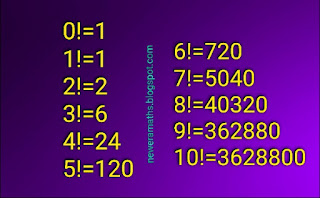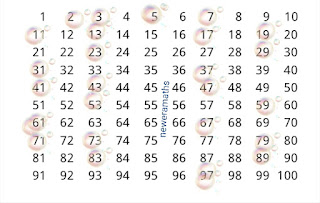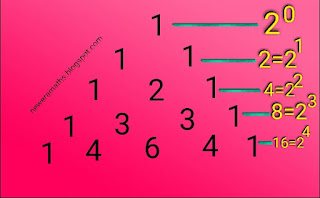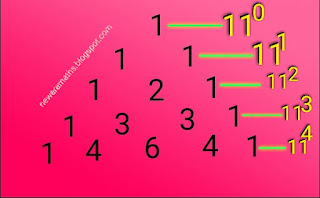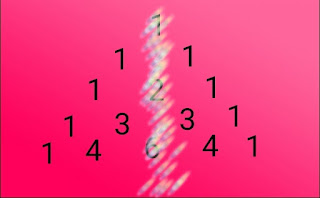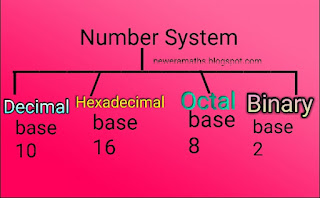Decimals
Definition:
Decimal is a way of representing numbers, where each digit or place value is multiplied or divided or by different power of tens. There are two parts, mamey integral part and fractional part ; in a decimal number. These two parts are separated by a 'decimal point'(.).
Let us take a decimal number, say:
417.83
Which can be expressed as:
4×10² + 1×10¹ +7×10⁰ +8×10⁻¹ + 3×10⁻².
(hundreds)(tens)(units)(tenths)(hundredths)
So, each place value is divided by ten when we move forward (right side) to the decimal point and each place value is multiplied by ten when we move backward(left side ) to the decimal point.
It should be noted that every whole number is a decimal number.
As for example, 7=7.0, 67=67.0, etc.
Types of decimals:
There are different types of decimal numbers.
(1) exact decimals,
(2) recurring decimals;
(3) infinite decimals .
Exact decimal:
An exact decimal is a decimal number which terminates after a few finite digits.
It doesn't go forever. So, we can write down all its digits.
As for example, 83.4, 91.1428, 66.78 , are exact decimals.
Recurring decimal:
A recurring decimal is a decimal number which go on forever with some repeated digits at regular intervals.
As for example, 0.333333... and 0.14285714285714... are recurring decimals.
Infinite or non-repeating decimal:
An infinite decimal is a decimal number which go on forever but don't contain any repeated digit. It contains a large number of digits which are endless!
As for example pi(π) is an infinite decimal.
Basic operations with decimals:
(1) The addition or subtraction of two decimals are performed as below.
Let us take two decimals 83.4 and 91.142 .
First, we add two zeroes on the right side of the decimal point of 83.4 after the digit 4 ; such that it's value remains uneffected. So, finally we get 83.4 as 83.400 . We have done this job to equate the number of digits of the given numbers after the decimal point.
Now these two numbers are eligible for addition.
Now let's add them.
83.400+91.142 =174.542.
This is the process of addition of two decimals.
The subtraction process is similar as the addition process.
(2)The multiplication with decimals are performed as below.
Multiplying decimals is the same as multiplying two whole numbers. We just need to remember the following:
(i) When we multiply a decimal number with a whole number; if there is one digit after the decimal point in the question, there will be one digit after the decimal point in the answer.
As for example, 83.4×7=583.8 .
(ii) When we multiply two decimal numbers ; if there are 'm' digits and 'n' digits after the decimal point in the first and second number respectively , there will be (m+n) digits after the decimal point in the answer.
As for example, 83.4×91.14=7601.076 .
(3) When we divide a decimal number ('n' digits after the decimal point ) by a whole number; divide as usual manner but keep the decimal point after ' n' digits starting from the right side.
As for example, 22.2÷2=11.1 .
If we are dividing a decimal number by another decimal number, we need to use the equivalent fractions.
As for example, 6.38 ÷ 0.07 means 6.38/0.07, which is the same as 638 / 7 (we have multiplied the numerator and denominator by 100).
Always remember to multiply the numerator and denominator by the same number. And make sure that the denominator is a whole number.
Importance of decimals:
In our world whole numbers are not enough always.
The whole numbers are generally used to specify discrete quantities. As for example, there are 60 students in the classroom. For counting students, and other discrete quantities, only the whole numbers are required. But to measure the height or weight of students we need continuous quantities. The need to describe continuous quantities often occurs in our everyday life. In these cases decimal numbers always helps us.
Decimals or decimal numbers are also converted to the percentages easily.
Decimals are perfectly compatible with the metric system of measurement.
Decimal numbers fit on small calculator screens and are typed very easily.
There are such infinite number of uses of decimals.
In the whole world decimals are really very important. Actually we live and believe in decimals!
If you find out any incorrect information or know anything more about this , please write it in the comment section!


